Windmill Palm Trees (Trachycarpus fortunei)
Windmill Palm Trees (Trachycarpus
fortunei) are one of the most cold hardy
Palms available. The Windmill Palm Tree has:
- Leaves that are arranged into symmetrical
crown that is about 8 to feet wide.
- Trunks that are usually covered with a loose
mat of coarse gray or brown fiber and can grow
to heights of 20 to 40 feet.
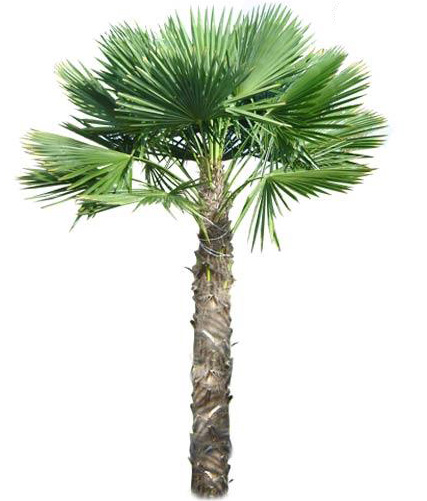
Windmill Palm Overview
The erect, single trunk of Windmill Palm is covered with dense, brown, hairlike fibers, and the three-foot-wide, fan-shaped fronds extend from 1.5-foot-long, rough-edged petioles. The trunk appears to be wrapped in burlap. A very slow-growing palm, Windmill Palm can reach 40 feet in height but is often seen much smaller, 10 to 20 feet tall. Windmill Palm works well as a framing tree, accent, specimen, patio or urn subject. It is ideal for use as an accent in a shady shrub border or by a front entryway. It does well in confined areas and is hardy to 10-degrees F. or lower.
Windmill Palms have
a rather slender single stem that is 8 to 10 inches
in diameter and is typically a bit narrower at the
base than at the top. Trunks are usually covered
with a loose mat of coarse gray or brown fiber.
In older individuals the fiber sloughs away to reveal
a smooth ringed surface. Chusan Palm, as it is also
commonly called, has light to dark green palmate
leaves that are lighter, almost silvery (glaucous),
on the underside. They are held on thin 3 foot flattened
stems that are finely toothed along both edges.
Leaves are circular, about 3 feet in diameter and
segmented about halfway. They are flat with leaf
segment tips held stiffly, but occasionally you
will see individuals with droopy tips. Leaves are
arranged into a symmetrical crown that is about
8 to 10 feet wide. Specimens grown in full sun and/or
under poor conditions may have much smaller, more
compact crowns.
Windmill Palm Tree Information
General Information
Scientific name: Trachycarpus fortunei
Pronunciation: tray-kee-KAR-pus FOR-too-nee-eye
Common name(s): Windmill Palm
Family: Arecaceae
USDA hardiness zones: 8A through 11 (Fig. 2)
Origin: not native to North America
Invasive potential: little invasive potential
Uses: indoors; deck or patio; specimen; container or planter
Availability: not native to North America
Windmill Palm Description
Height: 10 to 20 feet
Spread: 6 to 10 feet
Crown uniformity: symmetrical
Crown shape: palm, upright/erect
Crown density: open
Growth rate: slow
Texture: medium
Windmill Palm Tree Foliage
Leaf arrangement: alternate (Fig. 3)
Leaf type: simple
Leaf margin: entire
Leaf shape: star-shaped
Leaf venation: palmate
Leaf type and persistence: broadleaf evergreen, evergreen
Leaf blade length: 18 to 36 inches
Leaf color: green
Fall color: no color change
Fall characteristic: not showy
Windmill Palms Flowers
Flower color: yellow, white/cream/gray
Flower characteristics: not showy
Windmill Palm Fruit
Fruit shape: round
Fruit length: less than .5 inch, .5 to 1 inch
Fruit covering: fleshy
Fruit color: blue
Fruit characteristics: does not attract wildlife; not showy; fruit/leaves not a litter problem
Windmill Palm Trunk and Branches
Trunk/bark/branches: branches don't droop; showy; typically one trunk; thorns
Pruning requirement: little required
Breakage: resistant
Current year twig color: not applicable
Current year twig thickness:
Wood specific gravity: unknown
Windmill Palm Trees Culture
Light requirement: partial sun or partial shade, shade tolerant
Soil tolerances: clay; sand; loam; alkaline; acidic; well-drained
Drought tolerance: moderate
Aerosol salt tolerance: moderate
Other
Roots: not a problem
Winter interest: no
Outstanding tree: no
Ozone sensitivity: unknown
Verticillium wilt susceptibility: resistant
Pest resistance: resistant to pests/diseases
Windmill Palm Trees Usage and Management
Windmill Palm should be grown in shade or partial shade on fertile soil to look its best, but it is also tolerant of full sun on well-drained soils when given ample moisture in the northern part of its range. Plants should be watered faithfully. Protection from harsh winds will minimize leaf tearing, but plants can be used successfully close to the shore, being quite tolerant of salt and wind. There are fine examples of mass plantings where palms are spaced six to 10 feet apart around a patio or sitting area. They have also been used very successfully lining an entry walk to a large building. This adds a formal elegance to any structure, especially one with a glass facade.
Pests
Scales and palm aphids are pests of Windmill Palm.
Diseases
Windmill Palm may be infected by root rot, moderately susceptible to lethal yellowing disease, and leaf spots.
Pests
Windmill Palm Pests
Scales and palm aphids are pests of Windmill Palm.
Diseases
Windmill Palm Disease
Windmill Palm may be infected by root rot, moderately susceptible to lethal yellowing disease, and leaf spots.
|


Windmill Palm - Small Palm Tree - $ 79.95
Retail Price: 95.94
You Save: $15.99

Windmill Palm - Medium Palm Tree - $ 329.95
Retail Price: 395.94
You Save: $65.99

Windmill Palm - Large Palm Tree - $ 619.95
Retail Price: 743.94
You Save: $123.99
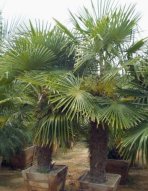
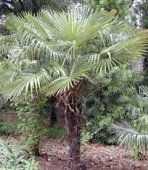
Other Cold Hardy Palms you might be interested in:
True Date Palms (Phoenix dactylifera)
(Sabal mexicana)
(Butia capitata)
(Cycas revoluta)
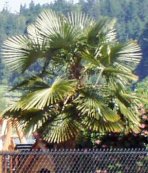
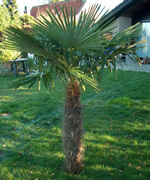
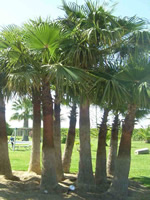
|











